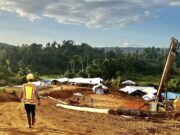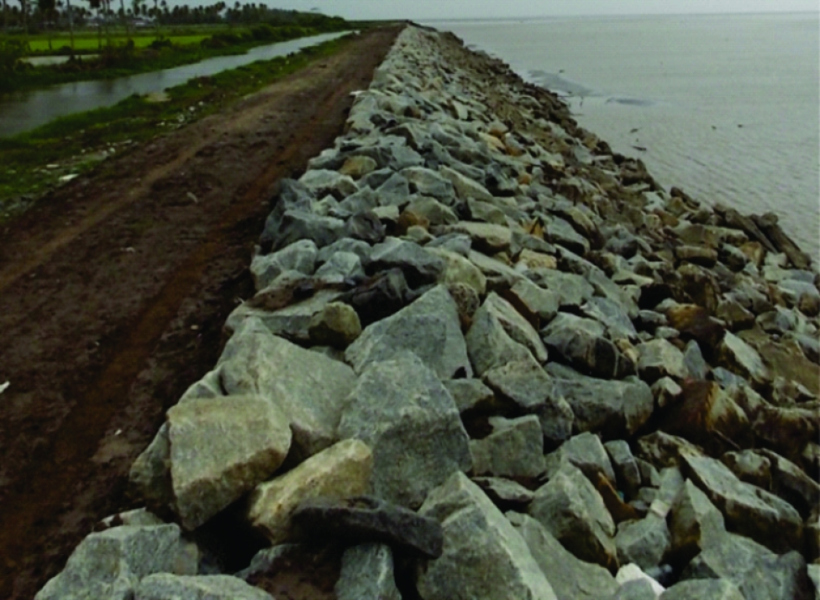
By Kiana Wilburg
Have you ever found yourself cooking a pot of rice to accompany your stew, but suddenly realize you’ve made way too much? How do you deal with the surplus? You could very well throw it away (which would be a wasteful course of action) or perhaps pack the rest away in the fridge to use with another meal or make a tasty rice pudding. On a national level, Guyana has found itself in a similar situation with its gas resources. The government has an agreement with ExxonMobil and two of its partners, Hess and CNOOC. The joint venture, led by Exxon, has found significant amounts of gas in the Stabroek Block and there is a great deal of debate on the best use of it.
The government and the ExxonMobil-led consortium have already decided what they will do with a portion of the gas. About 50 million standard cubic feet of gas per day will be piped to shore and land at a development site at Wales. There, it will be used for two purposes: generating 300MW of electricity and to make products like cooking gas (liquefied petroleum gas – LPG). With the extensive demand for energy, the government is expanding this project, now called Phase 2. It will add another 300MW and higher volumes of natural gas liquids (NGLs).
While the government has a clear vision of what it wants to do with a portion of the gas, it has an excess of about 16 trillion cubic feet across the Stabroek block. Since October 2023, the government engaged industry experts on refining its strategy on how to utilize and monetize these additional resources.
More than a year later, that strategy has not been completed. Some may be tempted to say the government may be dragging its foot on the document. But revelations by key industry officials have underscored why a plan for gas development is not as easy as it was with oil. For those who may not be aware, Guyana has actually broken the industry record for bringing oil to production stage. The average period for this in deepwater is 10 years. Exxon and its partners did it in under five years. The dynamics are way more complicated for gas.
Head of ExxonMobil Guyana Limited, Alistair Routledge made this point at the Guyana Energy Conference & Supply Chain Expo, stating, “transporting and storing gas is much more expensive than it is to transport and store oil. The energy density in gas is lower than it is for oil which means ultimately, the unit cost of gas can be more difficult to achieve.”
What both the government and Exxon have agreed on, is that it makes sense to bring gas to shore for power generation and to process certain byproducts.
But there being no major gas market in Guyana, Routledge alluded that even greater caution needs to be taken when considering the extraction of the surplus. Essentially, rushing to extract gas without a market to accept it would be horribly unwise.
So, what options are the Stabroek block partners considering ? According to Routledge, the partners are reviewing bringing larger quantities of gas from the southern portion of the block, and pipe and land it in Berbice. There, it could be used to support data mining, fertilizer production or alumina production.
In terms of data mining, this entails the use of massive centers which house thousands of high-powered servers that run continuously to process and store data. These operations require constant power and extensive cooling systems to prevent overheating, making energy one of their largest expenses. Countries with affordable energy sources often become attractive destinations for companies looking to establish or expand data center operations. With Guyana’s extensive gas resources, it could become a regional hub for data mining, especially when its prime real estate is taken into account.
Given the massive bauxite deposits in Guyana and Suriname, the Irfaan Ali led government has proposed a joint alumina plant with its CARICOM sister.
Fertilizer production is also a critical consideration given the government’s push for food security and it would no doubt mark the beginning of a major petrochemical industry.
The question now before us is : which of these options would provide Guyana with the highest value in terms of revenue generation and job creation ? Data mining is not labour intensive but the other two options would create more jobs. So where exactly is the sweet spot ? Another important consideration is : If Guyana develops a petrochemical industry, would it generate enough resources to compete competitively on the world market? Could it outcompete its regional partner, Trinidad and Tobago ? Would Guyana also seek to leverage the strengths of its CARICOM sister, T&T?
These are but a few of the critical questions Guyana’s government as well as its hired experts must carefully consider before rushing to finalize any strategy. Bear in mind as well that gas infrastructure is extremely expensive and takes a much longer time to put in place as opposed to oil production networks and vessels.
Whatever the decision, Guyana has to be cautious and methodical in the options pursued to meet domestic demands and grow new industries. The benefits can indeed be enormous if done right.
The one option that should not be on the table for consideration however— is leaving Guyana’s precious gas resources in the ground as this would be a terrible waste of an opportunity to generate revenue for future generations. This author, like many other folks, looks forward to hearing the government’s final plans and the justifications for same.










